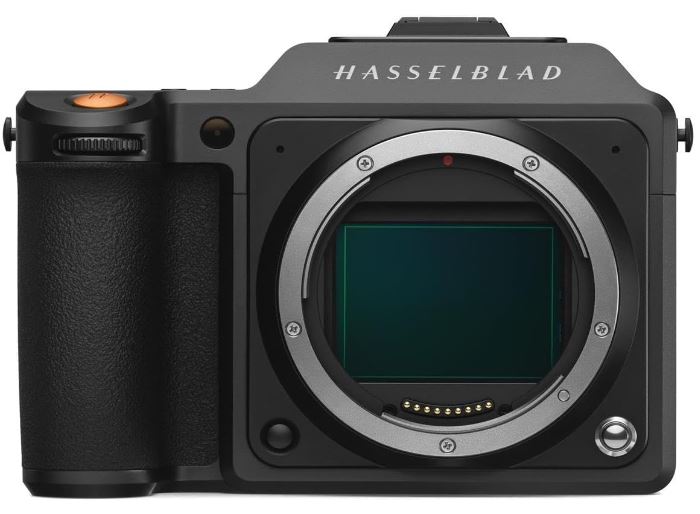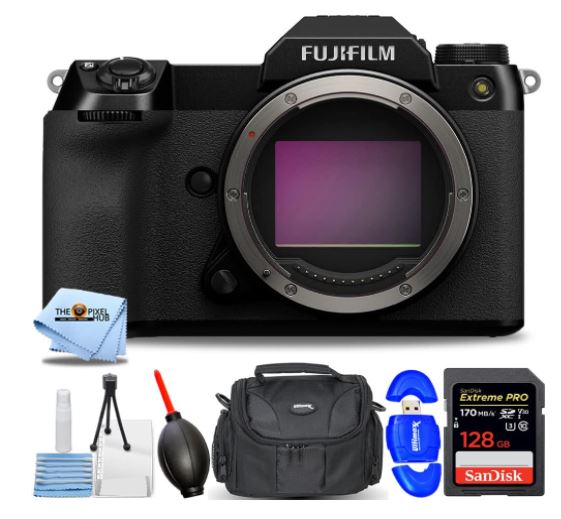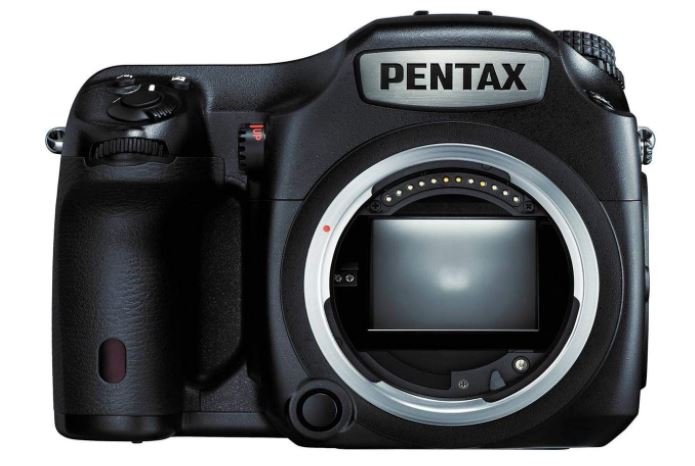Your medium format camera is an investment in capturing breathtaking images. But dust and grime can ruin those perfect shots. Discover the top cleaning kits designed to keep your camera in pristine condition.
In this guide, we’ll unveil the best tools to ensure your gear stays spotless and ready to deliver stunning photos every time.
Keep Reading: Best Flash Units for Medium Format
What Are The Best Cleaning Kits for Medium Format Cameras?
| Image | Product | Price |
|
Our Pick
1

|
Hassel X1D |
|
|
2

|
Fujifilm GFX |
|
|
3

|
Pentax 6457 |

Keeping your medium format camera clean is essential for capturing high-quality images. The right cleaning kit ensures that your camera stays in top condition, free from dust, dirt, and smudges.
Here are some of the best cleaning kits available:
1. Giottos Rocket Air Blaster
This is a must-have tool for any photographer. The Rocket Air Blaster uses a powerful jet of air to remove dust from your camera’s sensor and lens without touching the delicate surfaces. It’s a simple yet effective way to keep your camera clean.
2. Eclipse Cleaning System
The Eclipse Cleaning System is a professional-grade kit that includes sensor cleaning swabs and a cleaning solution. It’s perfect for removing stubborn spots and stains from your camera’s sensor. The swabs are designed to be used once, ensuring a clean application every time.
3. LensPen Camera Cleaning Kit
The LensPen is a versatile tool with a retractable brush on one end and a carbon cleaning tip on the other. It’s ideal for removing fingerprints and smudges from your camera’s lens. The compact size makes it easy to carry in your camera bag.
4. Zeiss Lens Cleaning Kit
Zeiss is a trusted name in optics, and their lens-cleaning kit lives up to its reputation. It includes a lens cleaning solution, a microfiber cloth, and wet wipes. The solution is gentle on lenses, making it safe for all types of camera glass.
5. VSGO Camera Cleaning Kit
This comprehensive kit includes everything you need to clean your camera: air blower, sensor swabs, lens cleaning pen, microfiber cloths, and a cleaning solution. VSGO is known for producing high-quality cleaning products, and this kit is no exception.
6. Altura Photo Professional Cleaning Kit
Altura Photo offers a budget-friendly option that doesn’t skimp on quality. This kit includes an air blower, cleaning brush, microfiber cloths, and a lens cleaning pen. It’s a great choice for photographers looking for an affordable, all-in-one solution.
Tips for Using Camera Cleaning Kits
- Always start with an air blower: This removes loose dust and particles without scratching the surfaces.
- Use lens cleaning solution sparingly: A little goes a long way, and excess liquid can damage your equipment.
- Clean in a dust-free environment: Avoid cleaning your camera in a windy or dusty area to prevent new dust from settling on your gear.
Regular cleaning with the right tools can prolong the life of your medium-format camera and ensure that your photos remain clear and sharp. Investing in a good cleaning kit is essential for any serious photographer.
What are the must-have tools in a camera cleaning kit?
To keep your camera in top condition, a good cleaning kit is essential. Here are the must-have tools:
1. Air Blower
An air blower helps remove dust from the camera sensor and lens without touching them. It’s a safe and effective first step in any cleaning routine.
2. Lens Cleaning Solution
A gentle, alcohol-free cleaning solution is necessary for removing smudges and fingerprints from lenses. Make sure it’s safe for optical surfaces.
3. Microfiber Cloths
Microfiber cloths are soft and non-abrasive, making them perfect for cleaning lenses and screens without scratching. Always use a clean cloth to avoid transferring dirt.
4. Sensor Cleaning Swabs
Sensor cleaning swabs are designed specifically for cleaning the delicate surface of your camera sensor. They come pre-moistened with a cleaning solution or dry, to be used with a separate solution.
5. Lens Pen
A lens pen has a retractable brush on one end and a carbon cleaning tip on the other. It’s great for removing dust and smudges from lenses and viewfinders.
6. Cleaning Brushes
Soft brushes help remove dust from hard-to-reach areas like buttons, dials, and the lens mount. They are gentle enough to avoid scratching surfaces.
7. Cleaning Tissues
Single-use cleaning tissues are convenient for quick lens cleaning. They are usually pre-moistened with a gentle cleaning solution.
8. Cotton Swabs
Cotton swabs are useful for detailed cleaning in small crevices and around the edges of the lens. Use them with a cleaning solution for best results.
9. Cleaning Spray
A spray bottle filled with a lens-safe cleaning solution can be handy for applying just the right amount of liquid to your cleaning cloth or tissues.
10. Carrying Case
A sturdy carrying case keeps all your cleaning tools organized and protected. It ensures you have everything you need on hand when you need it.
These tools are essential for maintaining your camera’s performance and longevity. Regular cleaning with the right tools helps ensure your photos are always sharp and clear.
What is the best way to clean camera lenses?
Cleaning camera lenses properly is crucial for maintaining image quality and protecting your equipment. Follow these steps for the best results:
1. Use an Air Blower
Start by using an air blower to remove loose dust and debris from the lens surface. Hold the lens at an angle and squeeze the blower to direct air across the glass. Avoid using canned air, as it can be too powerful and may damage the lens.
2. Brush Away Remaining Dust
If there is still dust on the lens, use a soft lens brush. Gently brush the lens surface to remove any remaining particles. Ensure the brush is clean and designed for camera lenses to avoid scratches.
3. Apply Lens Cleaning Solution
Apply a few drops of lens cleaning solution to a microfiber cloth or a lens tissue. Never apply the solution directly to the lens, as excess liquid can seep into the lens and cause damage.
4. Wipe the Lens Gently
Using the microfiber cloth or lens tissue with the cleaning solution, gently wipe the lens in a circular motion, starting from the center and moving outward. This helps to avoid streaks and ensures even cleaning.
5. Use a Lens Pen for Stubborn Smudges
For stubborn smudges or fingerprints, a lens pen is highly effective. Use the retractable brush to remove any loose dust, then use the carbon cleaning tip to gently rub away the smudges.
6. Dry and Buff the Lens
After cleaning, use a dry part of the microfiber cloth to buff the lens surface. This will remove any remaining moisture and polish the glass for a crystal-clear finish.
7. Check the Lens
Inspect the lens under good lighting to ensure all dust, smudges, and streaks have been removed. Repeat the process if necessary.
Tips for Maintaining Clean Lenses
- Use Lens Caps: Always use lens caps when the lens is not in use to protect it from dust and scratches.
- Store Properly: Keep your camera and lenses in a clean, dry place. Consider using a camera bag with compartments to avoid contact between lenses.
- Handle with Care: Avoid touching the lens glass with your fingers. Hold the lens by the barrel to prevent smudges.
- Clean Regularly: Regular cleaning prevents the buildup of dust and grime, making the process quicker and easier.
By following these steps and tips, you can keep your camera lenses clean and in excellent condition, ensuring your photos are always sharp and clear.
Why is cleaning your medium format camera important?
Cleaning your medium format camera is crucial for several reasons:
1. Image Quality
Dust, dirt, and smudges on your lens or sensor can degrade image quality. Even a small speck can cause blurry spots or unwanted artifacts in your photos. Regular cleaning ensures your images are sharp and clear.
2. Longevity of the Camera
Dust and debris can get into the moving parts of your camera, causing wear and tear over time. By keeping your camera clean, you reduce the risk of mechanical issues and extend the life of your equipment.
3. Sensor Health
The sensor is the most sensitive and essential part of your camera. Dust on the sensor can be challenging to remove and can permanently damage it if not cleaned properly. Regular sensor cleaning helps maintain its functionality.
4. Professional Appearance
If you are a professional photographer, a clean camera shows your clients that you take your work seriously. It reflects your commitment to quality and professionalism.
5. Cost Savings
Preventative maintenance, like regular cleaning, can save you money in the long run. Avoiding damage to your camera means fewer repairs and replacements.
Can dust affect image quality in medium format cameras?
Yes, dust can significantly affect image quality in medium format cameras. Here’s how:
1. Image Sensor Impact
Dust on the camera sensor can cause spots or stains in your photos. These artifacts appear as dark or light spots, especially in areas of uniform color like skies or backgrounds. Since the sensor captures the image data, any dust on it can directly impact the final image quality.
2. Lens Obstruction
Dust on the lens surface can cause blurriness, reduced contrast, and increased lens flare. Particles on the lens can scatter light, resulting in photos that are less sharp and more prone to ghosting effects.
3. Optical Viewfinder Issues
Dust inside the camera body or on the viewfinder can obscure your view, making it difficult to compose shots accurately. This might not directly affect the final image but can impact your ability to capture the scene as intended.
4. Internal Mechanisms
Dust inside the camera body can get into the moving parts, leading to potential mechanical issues over time. While this doesn’t directly affect image quality, it can cause long-term damage to the camera’s functionality.
How Often Should You Clean Your Medium Format Camera?
You should clean your medium format camera every few weeks or after each shoot, especially if you’ve been in dusty or dirty environments. Regular checks help maintain optimal performance and image quality.
How Do You Safely Clean a Medium Format Camera Sensor?
- Use an Air Blower: Gently blow dust off the sensor.
- Use Sensor Cleaning Swabs: Apply a sensor-safe cleaning solution to swabs and gently wipe the sensor.
- Avoid Touching the Sensor Directly: Use the proper tools to avoid damaging the sensor.
Are There Any DIY Methods for Cleaning Medium Format Cameras?
Yes, you can use tools like air blowers, lens cleaning pens, and microfiber cloths. Be cautious with cleaning solutions and swabs to avoid damaging the camera.
Which Brands Offer the Best Cleaning Kits for Cameras?
Brands like Giottos, LensPen, Zeiss, and VSGO offer high-quality cleaning kits. They provide comprehensive tools for effective camera maintenance.
What Should You Avoid When Cleaning Your Camera?
Avoid using excessive liquid, touching the lens or sensor directly with your fingers, and using abrasive materials. Do not use canned air, as it can damage your camera.
How Can Regular Cleaning Extend Your Camera’s Lifespan?
Regular cleaning prevents dust and debris from causing wear and tear, keeps the sensor and lens in good condition, and reduces the need for expensive repairs. This helps extend your camera’s lifespan and maintains its performance.
Conclusion
Regular cleaning is crucial for maintaining the performance and longevity of your medium format camera. Aim to clean your camera every few weeks or after each shoot, especially in dusty environments. To safely clean the sensor, use an air blower and sensor cleaning swabs, and avoid direct contact with the sensor.
DIY methods can include air blowers and microfiber cloths, but be cautious with cleaning solutions. Trusted brands like Giottos, LensPen, Zeiss, and VSGO offer excellent cleaning kits. Always avoid excessive liquid, touching sensitive parts directly, and using abrasive materials. Consistent cleaning helps prevent damage, ensures clear images, and extends your camera’s lifespan.

